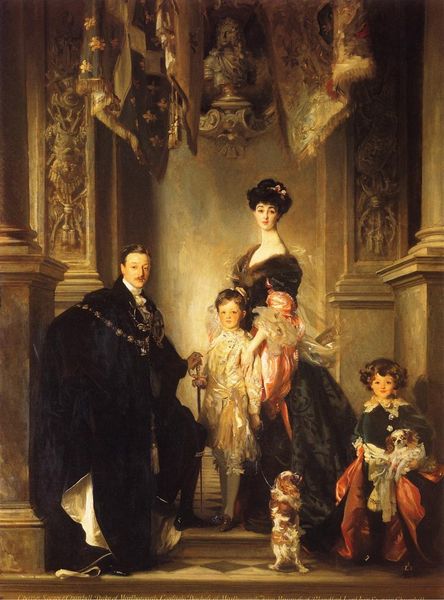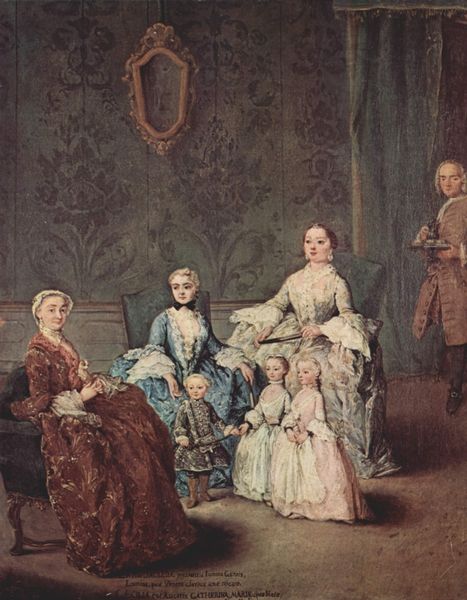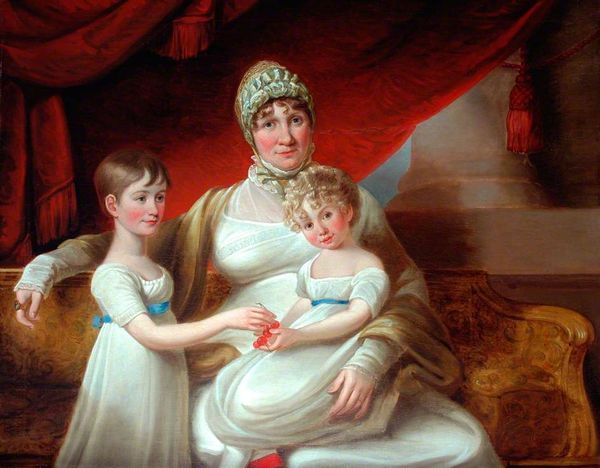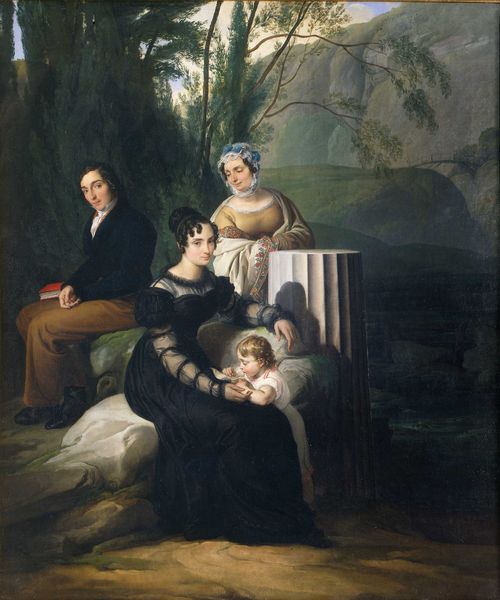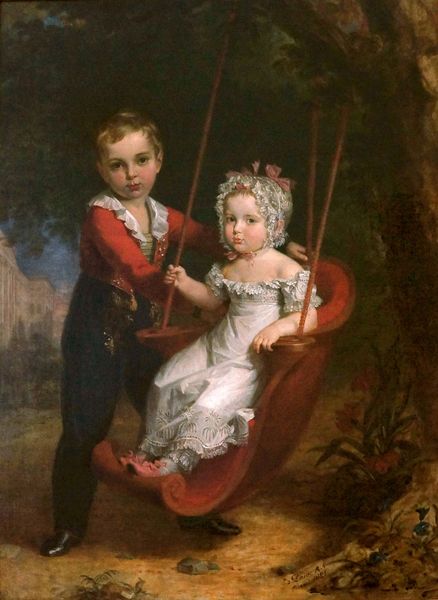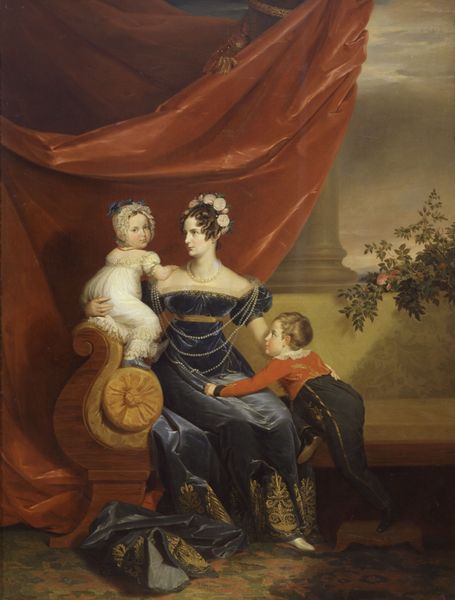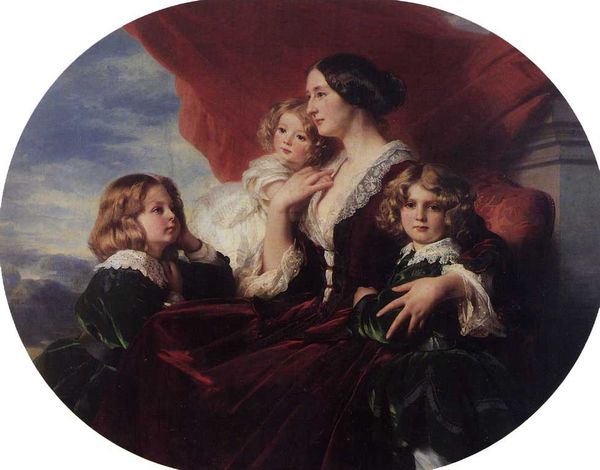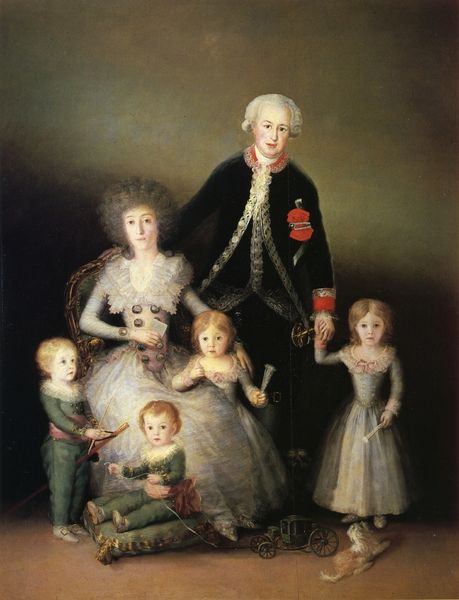
Emperor Frederick III of Germany, King of Prussia with his wife, Empress Victoria, and their children, Prince William and Princess Charlotte 1862
0:00
0:00
Copyright: Public domain
Editor: Standing before us, we have "Emperor Frederick III of Germany, King of Prussia with his wife, Empress Victoria, and their children, Prince William and Princess Charlotte", created in 1862 by Franz Xaver Winterhalter, rendered in oil paint. It's quite the familial display. Curator: Oh, heavens, the light just catches everything! It's so…radiant! It’s like peeking into a gilded dream of royalty, isn't it? That gold trim on the gown and the shimmering satin; it all feels almost…unreal. Like a storybook opened right in front of us. Editor: The texture play is interesting here, the rigid columns contrasting against the folds and swirls of silk and the way that the heavy velvet drapes. Winterhalter certainly understood the visual language of power communicated through materiality. Look at the precise articulation of lace, for example—labor intensive luxury objectified. Curator: Yes, precisely! You see how each child seems lost in their own reverie? Little glimpses of their future potential bubbling to the surface as they hold tightly to symbols of the court and privilege, I mean, even the drapes feel intentional. As if their lineage is just…*there*. Editor: Lineage being the key product here. This isn’t just a pretty picture. These portraits were commissions, endorsements and propaganda even. Winterhalter captured the visual rhetoric of 19th century aristocracy. It is worth questioning just how spontaneous these familial bonds are or ever can be. It does speak volumes about how this was made as well as who it was made for. Curator: Well, isn't that always the interesting dance? This moment frozen, this...gesture to posterity—filtered through brushstrokes and desires, it still tells some emotional truth. At least it whispers, even if it can’t scream. A reminder that beyond crowns and titles, these were real people playing their assigned roles, and trying to create some connection through that noise, to tell their own individual story. Editor: Ultimately, Winterhalter immortalized more than just a family; he gave us a peek into the materials that built and sustained an empire—through craft, labor, and an understanding of cultural desire.
Comments
No comments
Be the first to comment and join the conversation on the ultimate creative platform.

